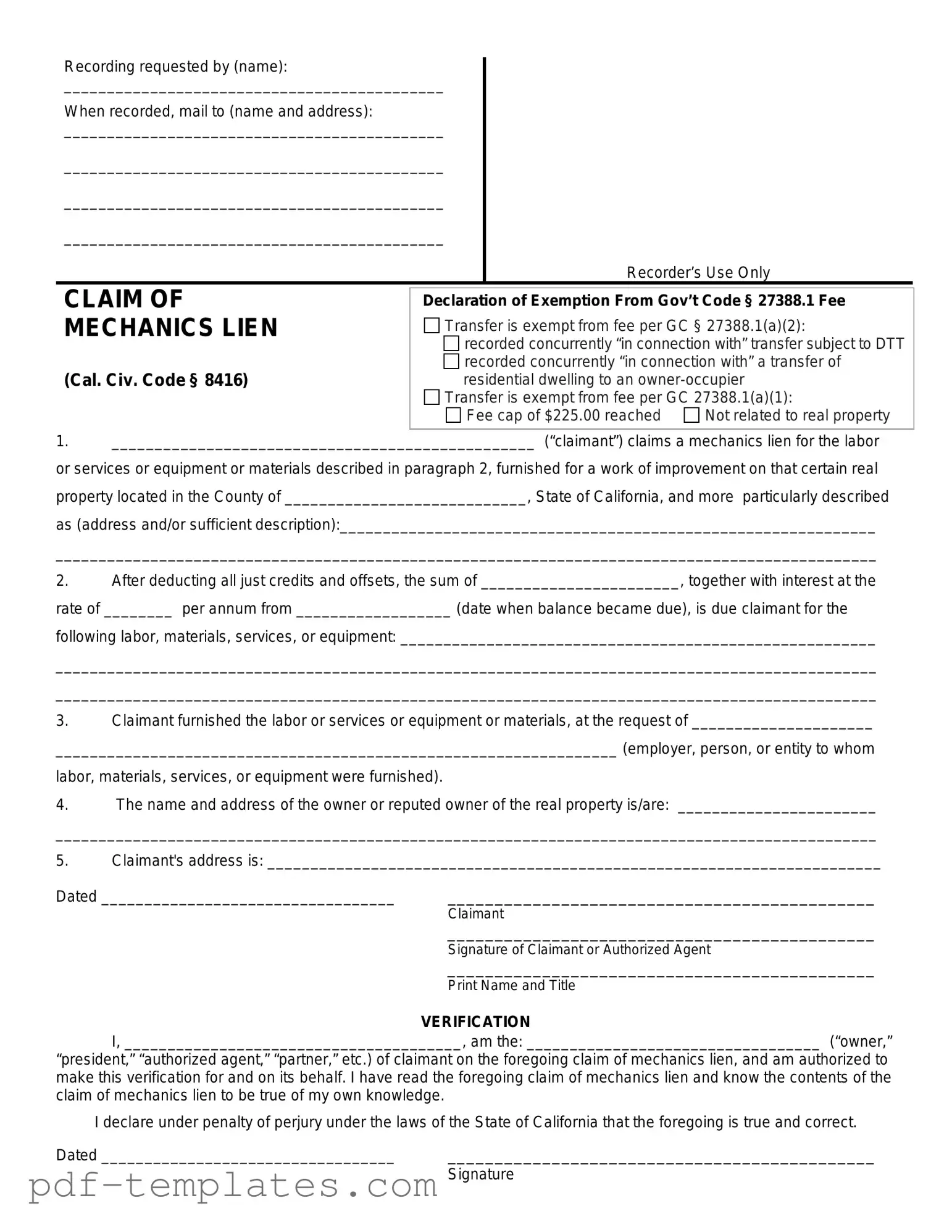The Mechanics Lien California form shares similarities with the Notice of Intent to Lien. Both documents serve as preliminary notifications to property owners that a lien may be placed on their property due to unpaid debts. The Notice of Intent to Lien is often used as a warning, giving property owners an opportunity to settle their debts before a formal lien is filed. This proactive approach helps facilitate communication between parties and may prevent further legal action.
Another document akin to the Mechanics Lien is the Preliminary Notice. This notice is typically sent to property owners, general contractors, and other parties involved in a construction project. It informs them of the potential for a lien if payment issues arise. By providing this early warning, the Preliminary Notice ensures that all parties are aware of their obligations and helps protect the rights of those who contribute to the construction work.
The Stop Notice is also similar in purpose to the Mechanics Lien. A Stop Notice is a legal tool that allows a contractor or supplier to halt payment to a property owner or general contractor until a debt is settled. While a Mechanics Lien directly attaches to the property, a Stop Notice is directed at the funds owed for the project. Both documents aim to secure payment but operate in different contexts within the construction process.
The Claim of Lien is another related document. This formal claim is filed with the county recorder's office and serves as the actual mechanism to enforce a lien on a property. Like the Mechanics Lien, it establishes a legal right to the property until the owed amount is paid. The Claim of Lien must adhere to specific legal requirements, similar to the Mechanics Lien process, making it essential for those seeking payment to understand both documents.
The Release of Lien is a document that complements the Mechanics Lien. Once a debt is paid, the lien must be formally released to clear the title of the property. This document is crucial for property owners who wish to sell or refinance their property. It serves as proof that the debt has been satisfied, thus restoring the property’s marketability. Understanding the Release of Lien is vital for anyone involved in construction or property transactions.
The Notice of Completion is another document that interacts with the Mechanics Lien process. When a construction project is finished, the property owner can file a Notice of Completion to officially mark the end of work. This notice affects the timeline for filing a Mechanics Lien. It shortens the period in which contractors and suppliers can file a lien, emphasizing the importance of timely action for those seeking payment for their services.
Understanding these various documents is essential for anyone involved in a construction project in California, especially as they navigate the complexities of payment and responsibility. One important resource to reference for comprehensive information on related forms is All California Forms, as it provides access to necessary documentation, including the Notary Acknowledgement form that helps in affirming the legitimacy of signatures on legal documents.
Finally, the Assignment of Lien is a document that allows a lien holder to transfer their lien rights to another party. This can happen when a contractor sells their claim to a debt or when a lender takes over the lien as part of a financial arrangement. The Assignment of Lien ensures that the new lien holder can enforce their rights, similar to how the original lien holder would have operated under the Mechanics Lien framework.
